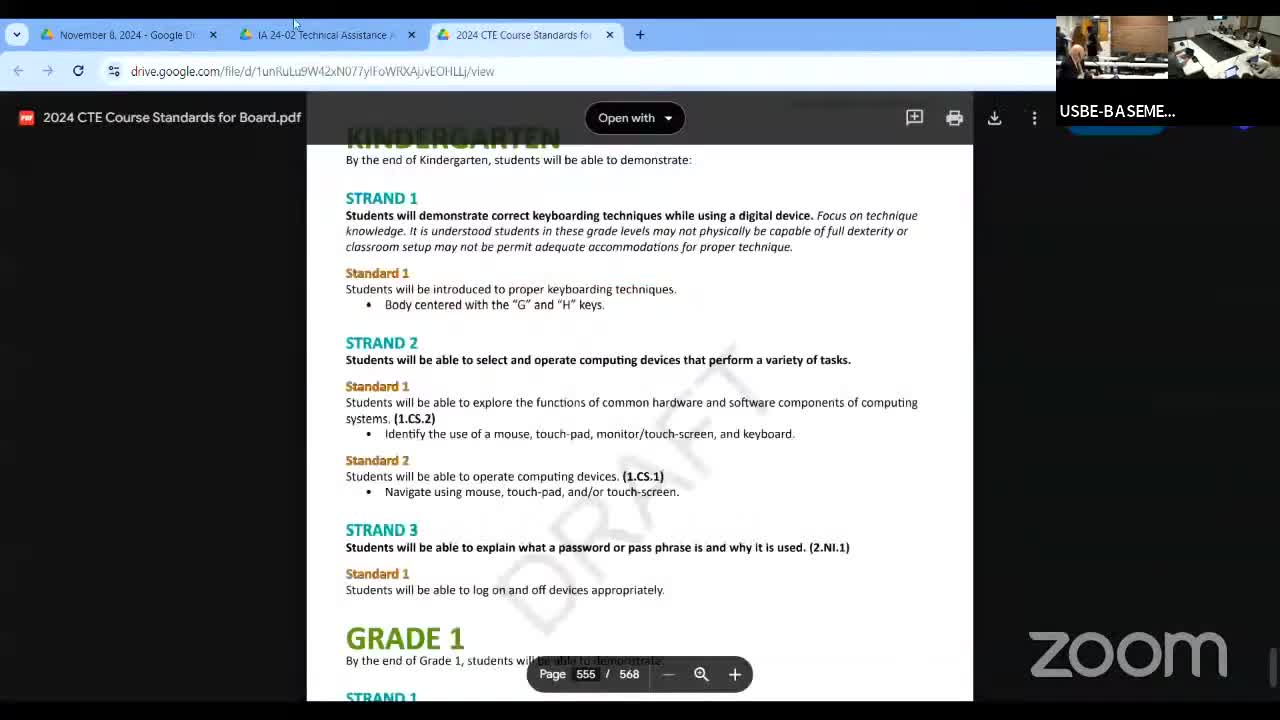Internal audit finds room to improve accessibility and sourcing of board technical assistance
November 09, 2024 | Utah State Board of Education, Utah Education, State Agencies, Organizations, Utah Executive Branch, Utah
This article was created by AI summarizing key points discussed. AI makes mistakes, so for full details and context, please refer to the video of the full meeting. Please report any errors so we can fix them. Report an error »

The Utah State Board of Education's internal audit office presented findings from a technical assistance audit that examined how the agency provides support to local education agencies, charters and other recipients.
Deputy audit executive Kevin John summarized the audit and told the committee that staff provide technical assistance across a wide range of programs; survey responses showed most assistance is considered helpful but identified several areas where the agency can improve.
Key findings
- Accessibility: About 40% of local education agency respondents in the audit said online technical assistance materials were difficult to locate. The auditors noted the board was transitioning websites during the audit period and said the migration highlighted out-of-date content and navigation problems.
- Source and citation issues: Auditors reviewed a sample of emails, training materials and website documents and found many documents lacked citations to the code, rule or other authoritative source supporting an instruction. The report said 54% of sampled emails and 47% of sampled website pages did not cite the authority behind the recommended action.
- Effective dates and authorship: The report said many materials lacked effective dates or clear authorship; 53% of training materials lacked effective dates and roughly one-third of reviewed website pages lacked an identified author or responsible office.
- Compliance items: Auditors looked at seven examples of technical assistance that statute requires and concluded 43% did not meet all statutory requirements.
Recommendations and next steps
Auditors made three principal recommendations: conduct a risk assessment of technical assistance practices, consider a policy or process to ensure posted materials are reviewed regularly (including authorship and effective dates), and consider a clearer threshold for when the superintendent should issue official clarifications of education law.
Deputy Superintendent Patty Norman and other staff described existing processes to log assistance requests and to follow up on corrective actions, and they noted some audit items require legislative changes or additional resources to resolve. Auditors and staff said corrective-action tracking is underway and that management has proposed timelines; internal audit will follow up through its normal tracking process and report back to the audit committee on progress.
The auditors emphasized that the agency already provides a large volume of useful assistance, but said improved citation, authoring, review cadence and website navigation would make information more reliable and easier for LEAs to use.
The audit was presented as an information item; committee members discussed oversight options and agreed to review corrective-action updates through the board's audit committee tracking process.
Deputy audit executive Kevin John summarized the audit and told the committee that staff provide technical assistance across a wide range of programs; survey responses showed most assistance is considered helpful but identified several areas where the agency can improve.
Key findings
- Accessibility: About 40% of local education agency respondents in the audit said online technical assistance materials were difficult to locate. The auditors noted the board was transitioning websites during the audit period and said the migration highlighted out-of-date content and navigation problems.
- Source and citation issues: Auditors reviewed a sample of emails, training materials and website documents and found many documents lacked citations to the code, rule or other authoritative source supporting an instruction. The report said 54% of sampled emails and 47% of sampled website pages did not cite the authority behind the recommended action.
- Effective dates and authorship: The report said many materials lacked effective dates or clear authorship; 53% of training materials lacked effective dates and roughly one-third of reviewed website pages lacked an identified author or responsible office.
- Compliance items: Auditors looked at seven examples of technical assistance that statute requires and concluded 43% did not meet all statutory requirements.
Recommendations and next steps
Auditors made three principal recommendations: conduct a risk assessment of technical assistance practices, consider a policy or process to ensure posted materials are reviewed regularly (including authorship and effective dates), and consider a clearer threshold for when the superintendent should issue official clarifications of education law.
Deputy Superintendent Patty Norman and other staff described existing processes to log assistance requests and to follow up on corrective actions, and they noted some audit items require legislative changes or additional resources to resolve. Auditors and staff said corrective-action tracking is underway and that management has proposed timelines; internal audit will follow up through its normal tracking process and report back to the audit committee on progress.
The auditors emphasized that the agency already provides a large volume of useful assistance, but said improved citation, authoring, review cadence and website navigation would make information more reliable and easier for LEAs to use.
The audit was presented as an information item; committee members discussed oversight options and agreed to review corrective-action updates through the board's audit committee tracking process.
View full meeting
This article is based on a recent meeting—watch the full video and explore the complete transcript for deeper insights into the discussion.
View full meeting

